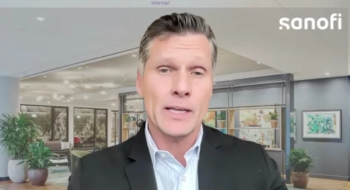
Four things health execs should know about the oncology pipeline
Here’s how you can recognize changes in the oncology pipeline and maximize value related to cancer care.
Oncology therapeutic and supportive care agents in the development pipeline promise to be more effective, more therapeutically targeted, more personalized-and far more costly, according to industry experts.
“At the same time, more effective management of cancer care is increasingly facilitated by increasing penetration of electronic health records [EHRs], EHR-embedded clinical pathways, increasing share of patients treated in integrated delivery systems and larger oncology practices, transition from fee-for-service payment to risk-share payment, and the use of 'big data' to discover how resources can be optimally applied,” says Elan Rubinstein, PharmD, MPH, principal of EB Rubinstein Associates, a pharmaceutical management consulting firm. “Understanding the many changes under way in the healthcare marketplace, including oncology drugs in the pipeline, healthcare executives can coordinate the reaction of their organization to those market changes and thereby maximize value for money related to the care of cancer patients.”
Here are the top four trends you should keep on your radar.
#1. Drug trend is increasing
The global oncology market reached $107 billion in 2015, according to the “
Nadina Rosier, health and group benefits practice leader at Willis Towers Watson, says oncology drug trend will increase exponentially over the next few years because of the rich pipeline of innovative new drugs and their utilization and cost.
The IMS Health Report predicts that future growth in the oncology drug market will be driven by wider utilization of new products, especially immunotherapies, and will be offset by decreased use of existing treatments. More than 70 new cancer treatments approved to treat more than 20 tumor types have been developed in the past five years.
#2. The pipeline is expanding
According to IMS Health, the pipeline for oncology drugs in clinical development has grown by more than 60% in the past decade. One possible explanation is the fact that the median time from patent filing to approval for cancer drugs in 2015 was 9.5 years, down from 10.3 years in 2013. Contributing to the reduction in approval time may be the FDA’s breakthrough therapy designation introduced in 2012.
AmbresMore than 500 companies are currently pursuing oncology drug development, accounting for approximately 600 new molecules through late-stage clinical development, according to IMS Health. Of these 600 new agents, most are seeking approval for non-small cell lung, breast, prostate, ovarian and colorectal cancers.
Several oncology drugs are expected to be approved sometime in 2017. One is abemaciclib, an oral CDK4 and CDK6 inhibitor being developed by Eli Lilly for breast cancer treatment. Other examples include brigatinib, from Ariad Pharmaceuticals for lung cancer, and rucaparib (Clovis Oncology), for ovarian cancer.
Cynthia Ambres, MD, principal at KPMG Strategy and a member of the firm’s Global Healthcare Center for Excellence, adds that biosimilar drugs could also reach the market for some of the targeted therapies that were introduced in the 2000s. According to Ambres, some of the adjuvant treatments, such as filgrastim to help restore white blood cell counts, already face competition and these could act as a constraint against rising prices.
#3. Personalized medicine is growing
According to PHRMA’s “
report, 73% of cancer medicines in the pipeline have the potential to be personalized medicines.
“Medicines are personalized via use of biomarkers to identify patients for whom therapy is likely to be effective,” says Rubinstein. “So while healthcare executives can expect new cancer therapies to be increasingly expensive, biomarkers [i.e., personalized medicine] can support that their use is channeled in such a way to minimize waste of drugs and unnecessary risk to patients, due both to toxicity and to delay in alternative therapy that has a better chance of being effective.”
Ambres agrees. “The medicines will target the cancers more effectively and have fewer side effects than the older, toxic chemotherapies and the treatments will gradually become the standard of care as treatments gain more exposure in the market,” she says. “The treatments reaching the marketplace are targeting much more specific biomarkers, so oncology care will become more personalized.”
One growing area of targeted cancer treatments is adoptive cell transfer (ACT), an approach to immunotherapy that involves engineering a patient’s immune cells to recognize and attack their tumors, according to the National Cancer Institute (NCI). In ACT, a patient’s T cells (immune cells collected from the patient’s blood), are genetically engineered to produce special receptors called chimeric antigen receptors (CARs). CARs allow the T cells to recognize a specific antigen on tumor cells.
“From a medical coverage perspective, the CAR T-cell therapies are of high interest as these therapies have shown very effective results, but have also been noted to be very expensive at $500,000 to $1,000,000 per course of therapy,” says April Kunze, PharmD, senior director, formulary development and trend management strategy at Prime Therapeutics. “Additionally, they are used with other expensive treatment options and therefore will have a significant impact on medical drug trend. This will push payers to evaluate the best patient population to receive these therapies, with the potential for some difficult coverage decisions.”
#4. Payment change is coming
As more cancer therapies are developed, payers are expected to tighten their negotiation stance with manufacturers and adopt new payment models to drive greater value from their expenditures, according to IMS Health.
There has also been a swing in the mix of new therapies toward oral medications, which make up nearly 40% of the targeted therapies in the U.S. and shifts drug payment to pharmacy benefits and demands greater delivery via retail channels.
KunzeAs for drug management strategies, Rosier says most pharmacy benefit managers (PBMs) use traditional utilization management like prior authorization, quantity limits, and step therapy for oncology drugs. Rosier has also seen some PBMs also use preferred oncology “formularies” or contracting efforts to “prefer” one drug over another for specific cancer indications.
“In 2017, we will see oncology exclusions for the first time in the marketplace,” says Kunze, “With more ‘me-too’ therapies, payers will be looking for additional management opportunities and preferred product designations as a way to manage trend in a class that has historically been managed by the FDA-labeled indication(s).”
The IMS Health report notes that the average total treatment costs for patients in commercial insurance plans with a cancer diagnosis who are receiving active treatment reached $58,000 in 2014, up 19% from 2013.
Erin Bastick, PharmD, is a graduate intern at University Hospitals Elyria Medical Center in Elyria, Ohio.
Newsletter
Get the latest industry news, event updates, and more from Managed healthcare Executive.




















































